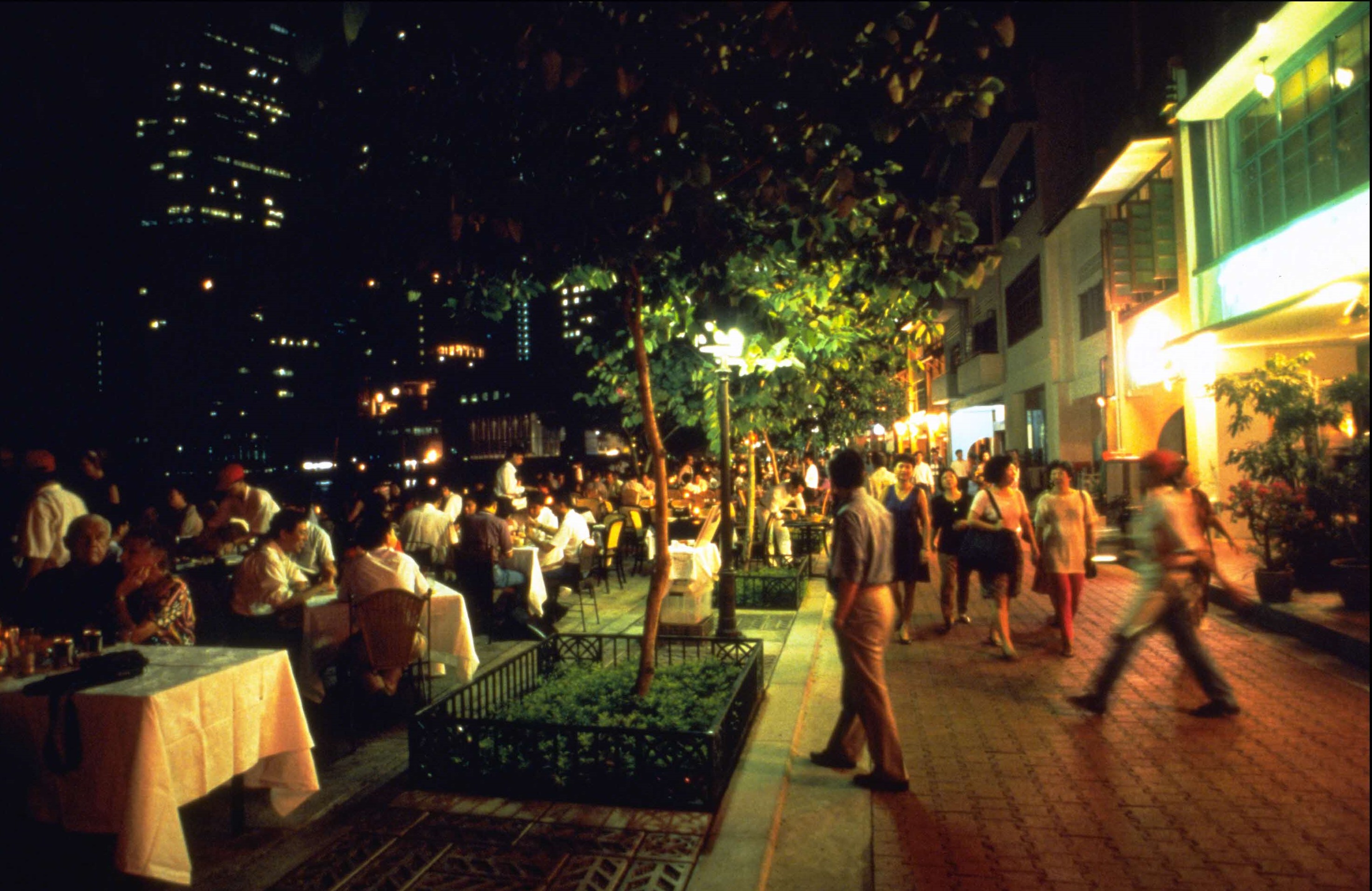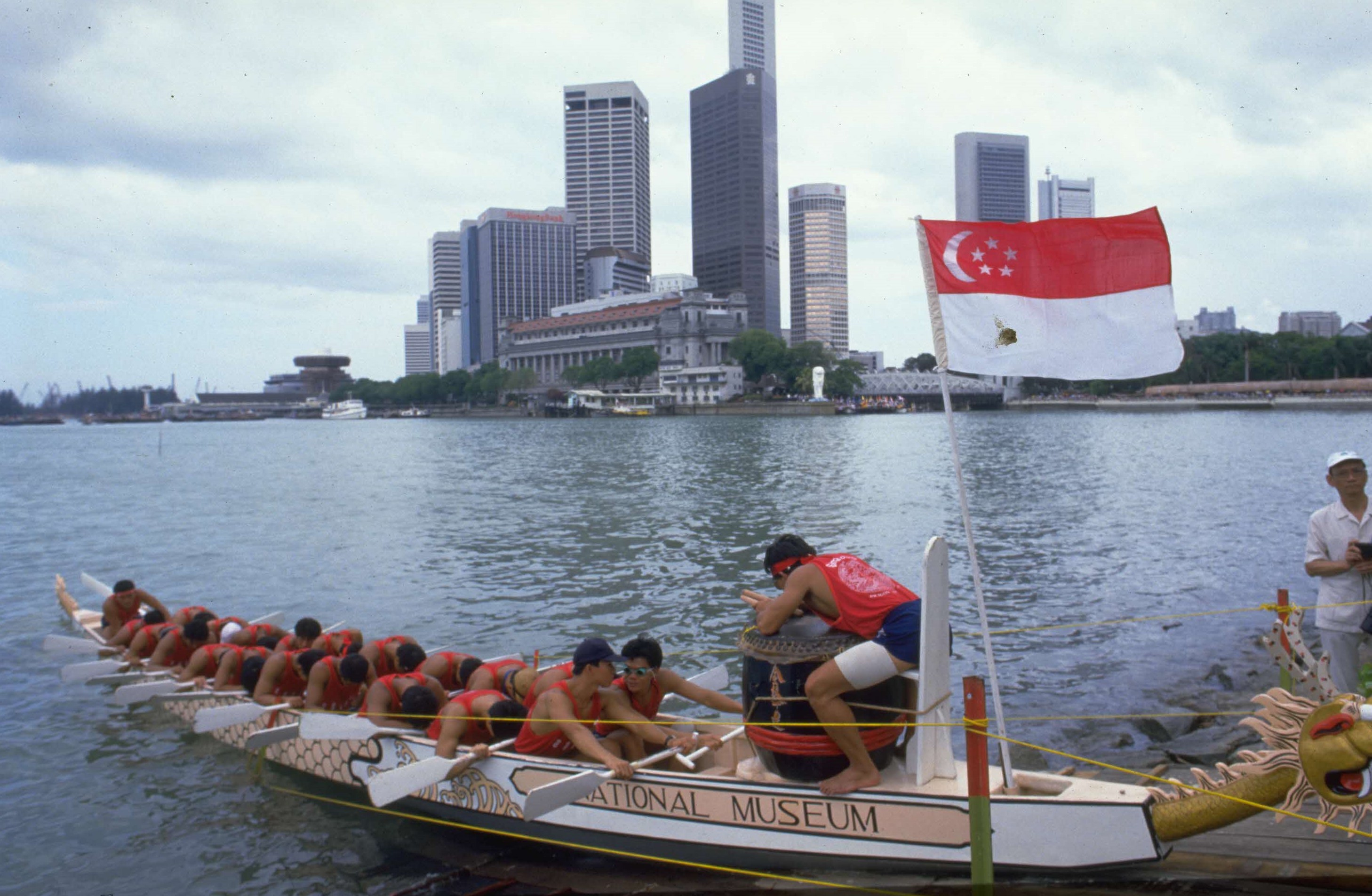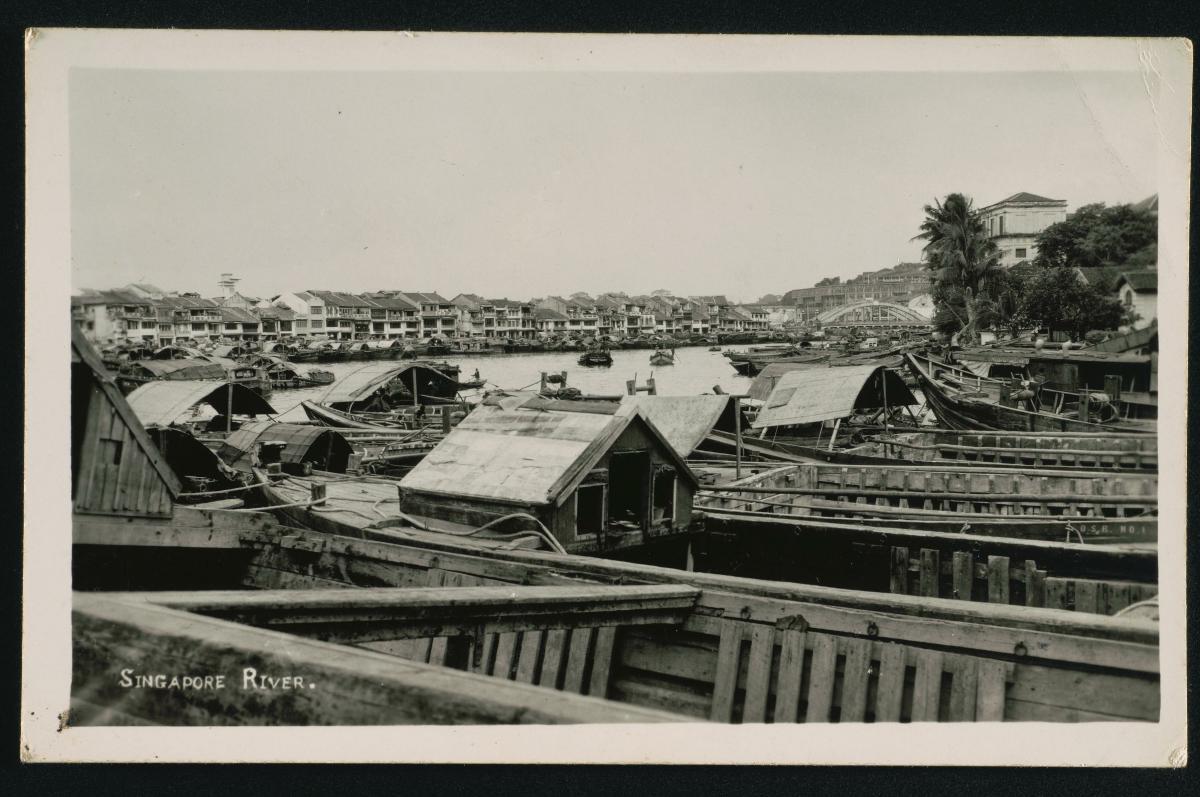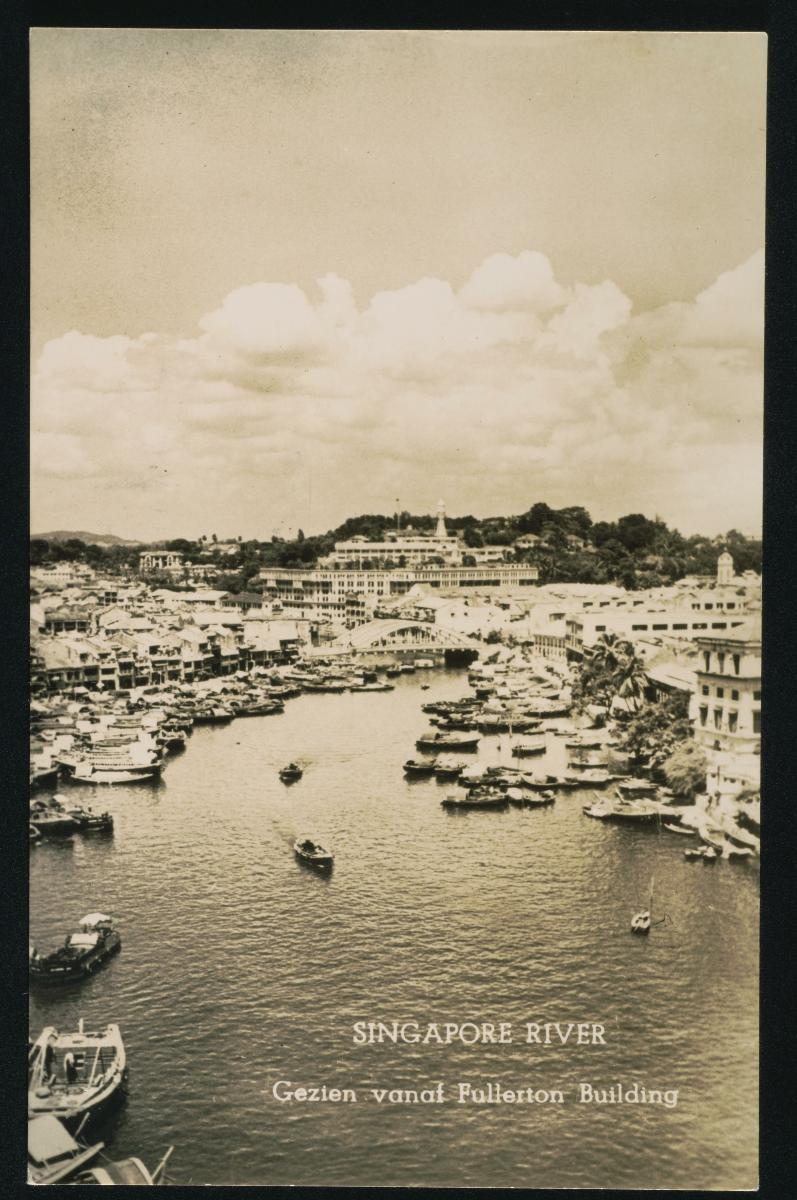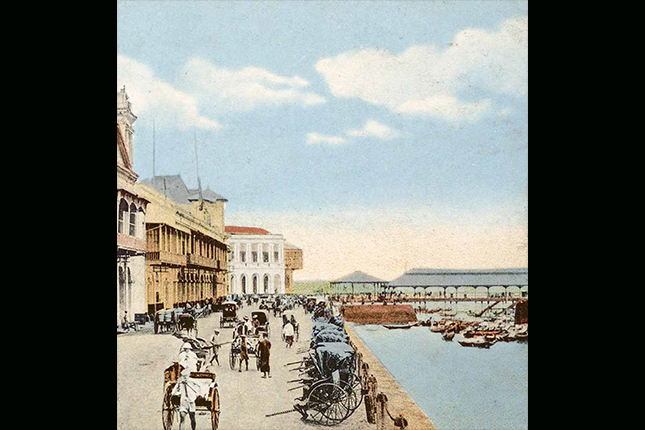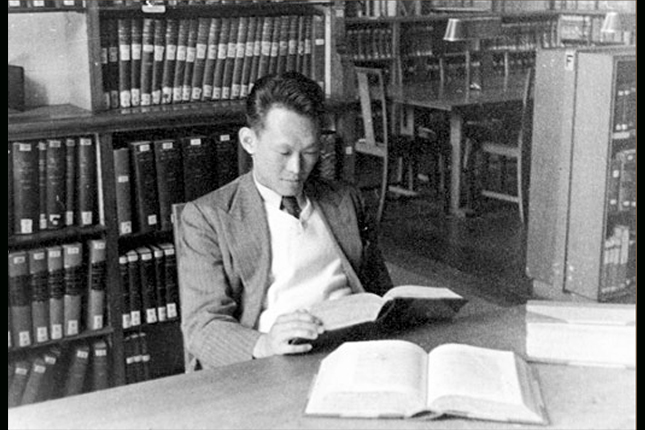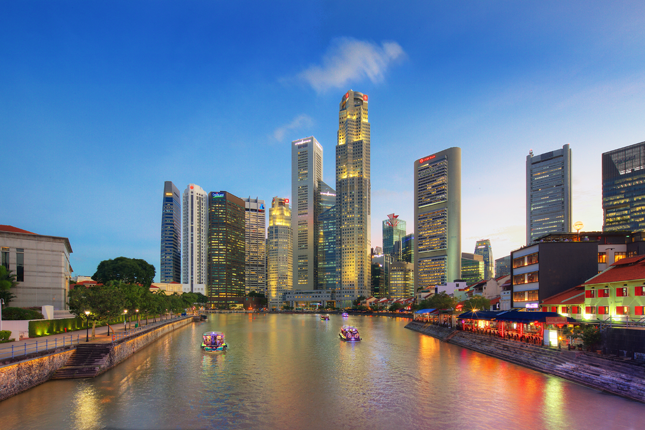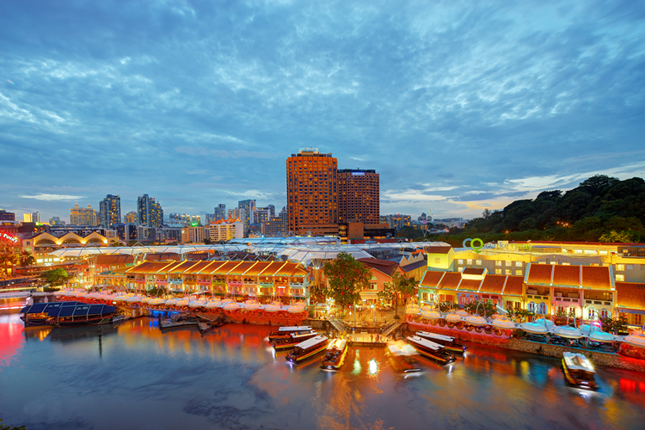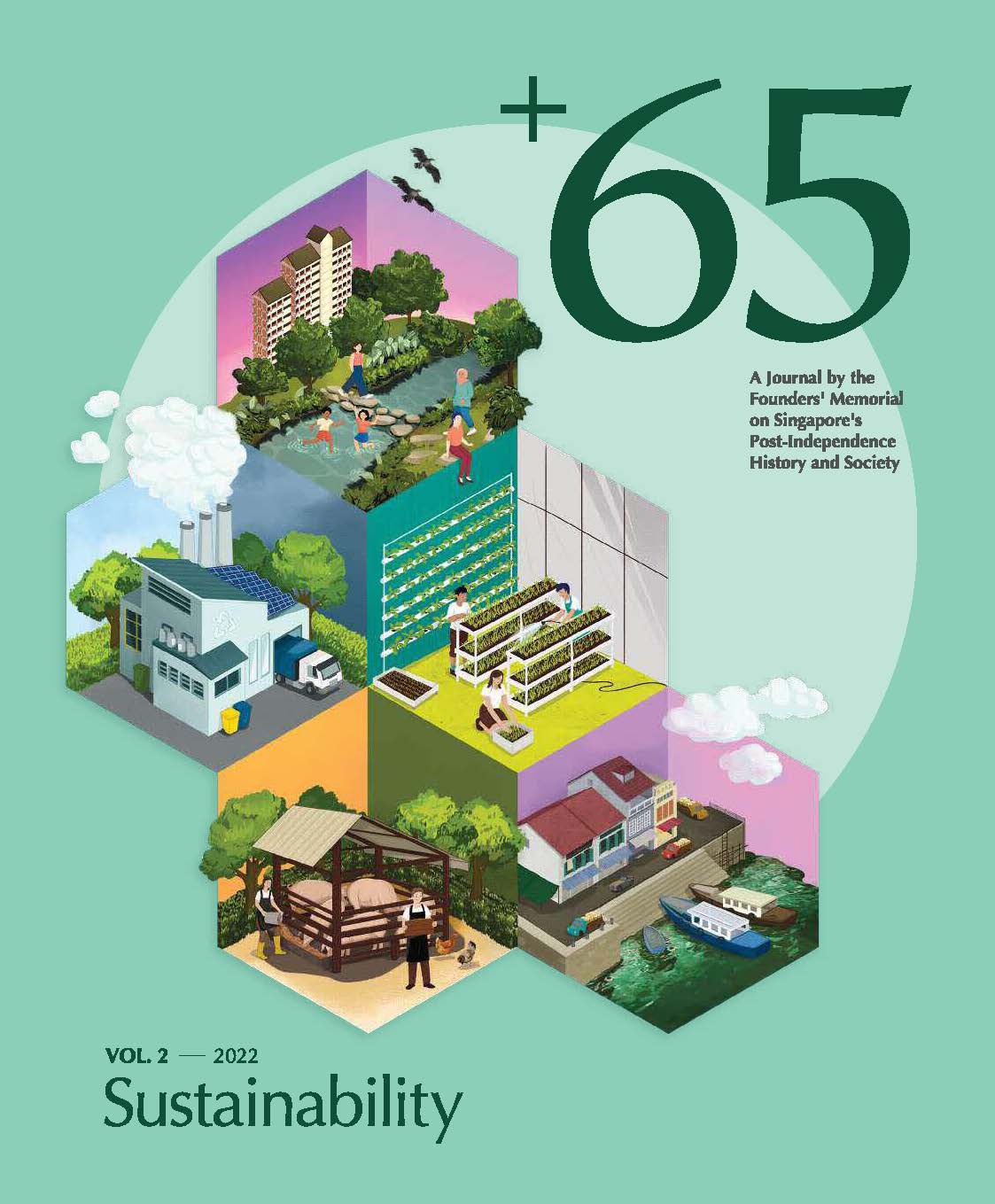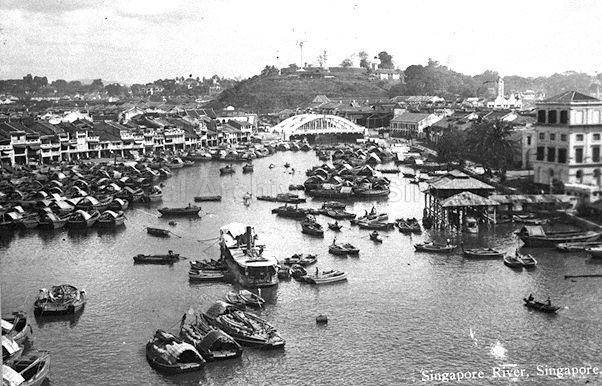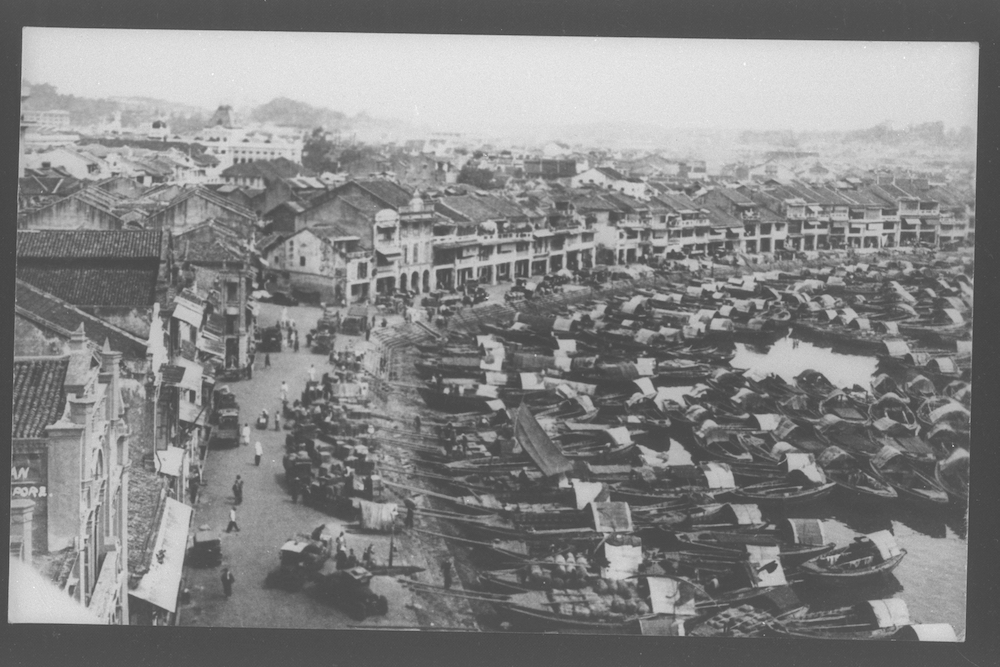TL;DR
The clean-up of the Singapore River has long been held up as an example of the Republic’s transformation and its commitment to sustainable development. Now, the riverine scenery is a dynamic combination of old and new, with historic features being adaptively re-used in a thriving leisure and entertainment scene.
+65 Volume 2 – 2022
Text by Adeline Chia
Read the full +65 Vol. 2
Strolling along the Singapore River, with a view of its placid waters contrasting against the lively waterside establishments, one is hard-pressed to imagine the waterway’s filthy past. Indeed, the clean-up of the Singapore River has long been held up as an example of the Republic’s transformation and its commitment to sustainable development. Now, the riverine scenery is a dynamic combination of old and new, with historic features being adaptively re-used in a thriving leisure and entertainment scene.
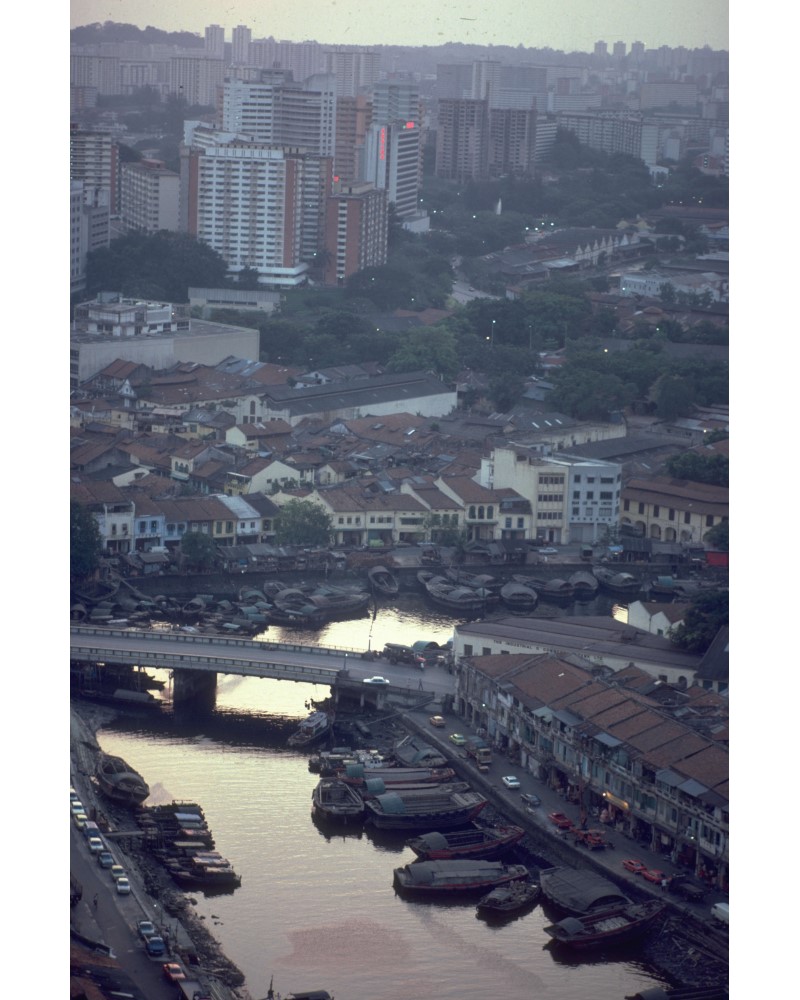
A bird’s-eye view of the Singapore River at Clarke Quay with Read Bridge in the photo centre, 1980. Ronni Pinsler Collection, courtesy of the National Archives of Singapore.
The Singapore River clean-up is inseparable from the greater plan to modernise Singapore in its post-independence years, unfolding in tandem with state planning initiatives such as the development of public housing. The clean-up’s origins can be traced back to 1969, when then-Prime Minister Lee Kuan Yew tasked the Public Works Department and Public Utilities Board to come up with a plan to clean up Singapore’s major waterways.1 Following this, there were some initial studies and proposals by individual government agencies, but the ball really got rolling in 1977, after a speech Mr Lee gave at the opening ceremony of Upper Peirce Reservoir, where he gave the Ministry of Environment a 10-year target to clean up the Singapore River and Kallang Basin.2
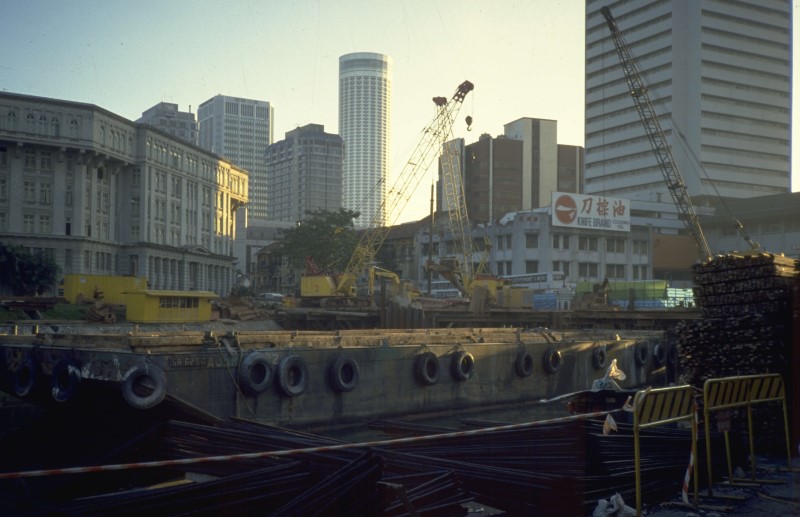
Urban Redevelopment Authority projects along the banks of the Singapore River at River Valley and Hill Street junction, 1986. Ronni Pinsler Collection, courtesy of the National Archives of Singapore.
“The day we achieve that [clean river], whoever has been in charge for the last ten years or for the next ten years, if I am still around, I will give each one of them—both the Minister, the Permanent Secretary and the head of department—a real solid gold medal, one troy ounce (31.1 grams).”
-Prime Minister Lee Kuan Yew at the opening of Upper Peirce Reservoir, 27 February 1977, announcing the Government’s plan to clean up the Singapore River3
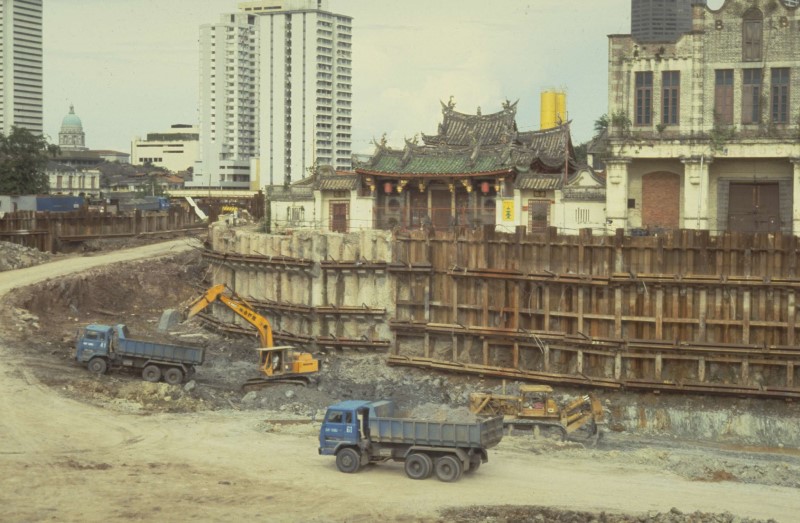
River works at Magazine Road, with Tan Si Chong Su temple, a National Monument, in the background, 1980. Ronni Pinsler Collection, courtesy of the National Archives of Singapore.
The pace of the clean-up then picked up. In and around the river, sources of pollution—contributing to garbage, sewage, and industrial waste—were removed. Over 10 years, more than 46,000 squatters in the Singapore River and Kallang Basin were relocated to public housing, and nearly 5,000 hawkers were asked to move to hawker centres.
The clean-up was officially declared complete on 2 September 1987. As part of the Clean Rivers Commemoration, a five-day carnival held at Marina Bay, Mr Lee presented gold medals to 10 people for their contributions.5
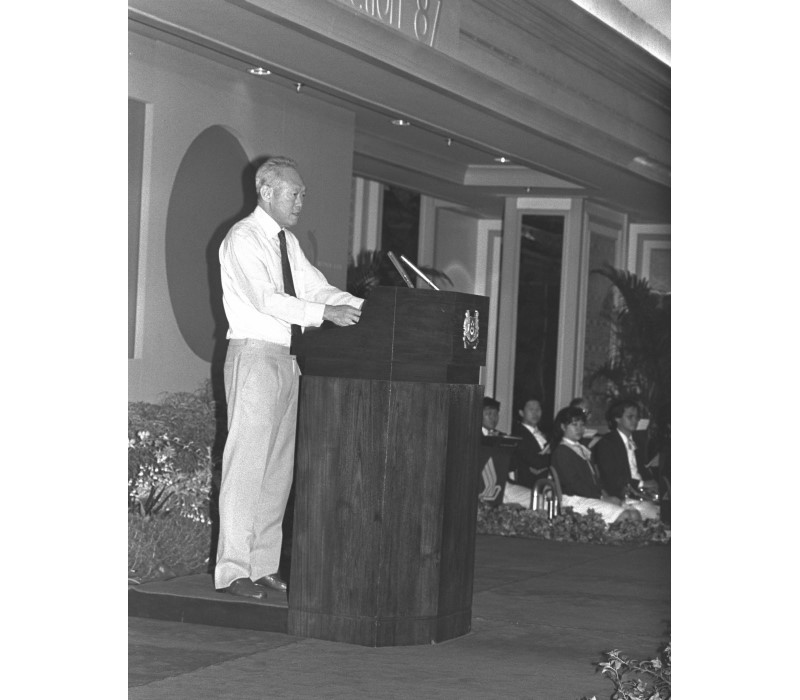
PM Lee Kuan Yew speaking at the Clean Rivers Commemoration openingceremony at Marina Mandarin, 1987. Ministry of Information and the Arts Collection, courtesy of the National Archives of Singapore.
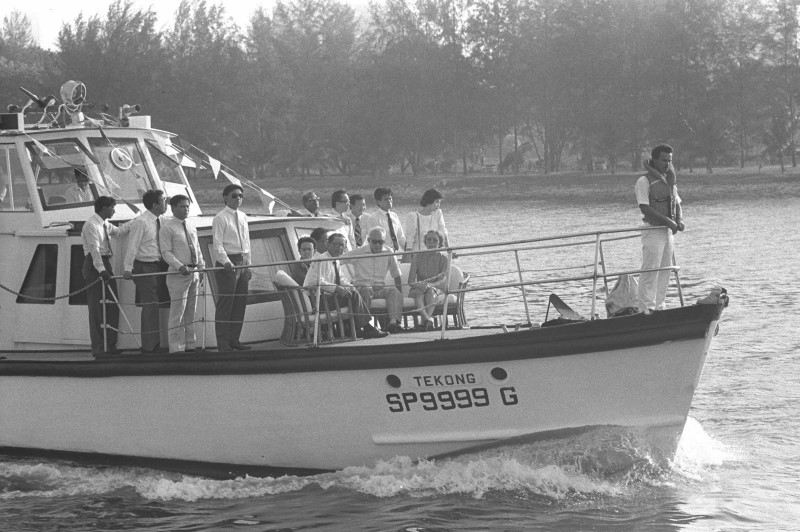
PM Lee Kuan Yew, Mrs Lee, and Environment Minister Dr Ahmad Mattar inspecting Marina Bay and Kallang Basin, 1987. Ministry of Information and the Arts Collection, courtesy of the National Archives of Singapore.
Today, the Singapore River flows through several rejuvenated precincts including the Civic District and the Central Business District. The river ends in Singapore’s largest reservoir, the Marina Reservoir, with a massive dam across the Marina channel that was completed in 2008.
Transformative as the clean-up may be, there are those who have noted the human costs of this process of urban renewal. Historian Stephen Dobbs has chronicled the hardships of lighter operators who were evicted from the river to upgraded facilities at Pasir Panjang over the course of the cleanup.6 Other cultural commentators have lamentedthe loss of the Singapore River’s place identity. Singaporean poet Lee Tzu Pheng wrote in her much anthologised poem, Singapore River: “The operation was massive;/ designed to give new life to the old lady./ We cleaned out/ her arteries, removed/ detritus and silt,/ created a by-pass/ for the old blood./ Now you can hardly tell/ her history”.7
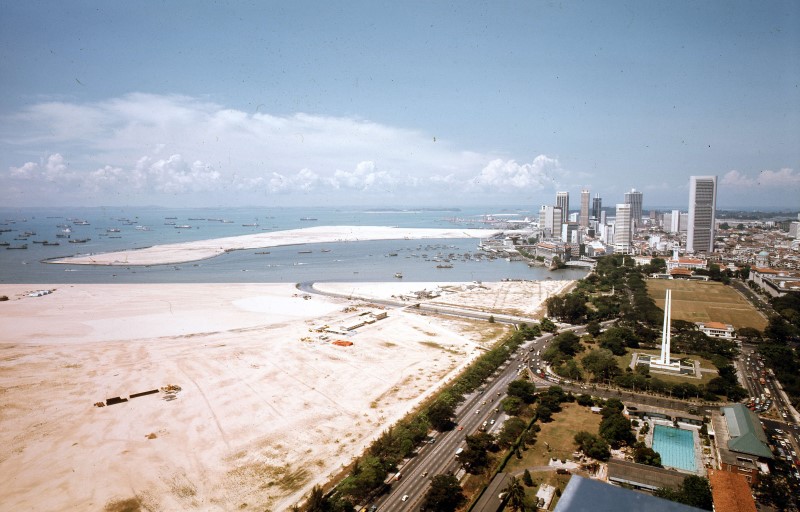
Reclamation works at Marina Bay, 1977. © Urban Redevelopment Authority. All rights reserved.
These losses, arguably, are outweighed by gains in other quarters, such as massive improvements in sanitation and safety. There are also other positive ecological outcomes. Overall, the city-state’s cleaner waterways have become attractive habitats for wildlife, attracting species previously rare in Singapore, such as otters.
Ultimately, what the Singapore River story shows is that pursuing sustainable development often involves altering the social fabric of a place. Nevertheless, the river’s past is never completely cut off, as shown in the conserved buildings lining its banks. Another way the river’s history can be kept alive is in the memories of those who encountered it back then. In closing, this essay ends with the accounts of those who have experienced the river at different times. Indirectly, these rich stories chart the river’s evolution and reflect the myriad facets of these waters.
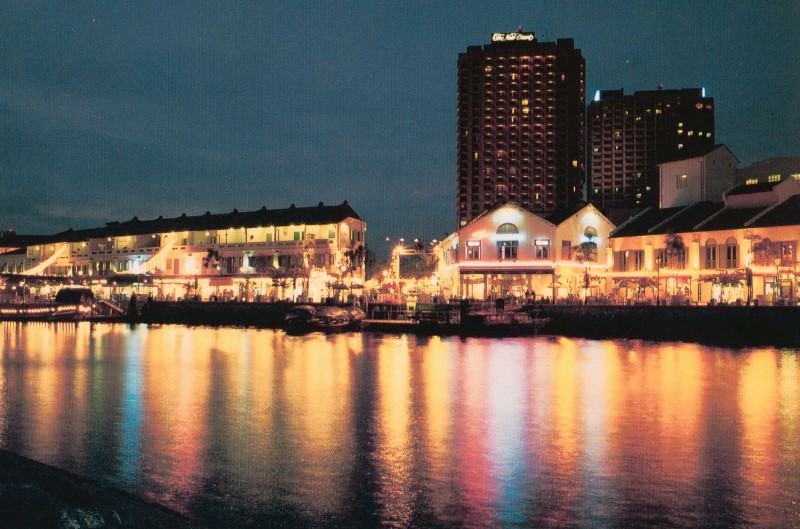
Night view of Clarke Quay, mid–1980s. Collection of the National Museum of Singapore, National Heritage Board.
1960sJames Foo Siang Kee
From 1962 to 1963, I was attached to the Marine Police department at Clifford Pier and worked as a police constable in a patrol boat. The river was very busy with tongkangs, sampans, lighters, and bumboats. We had to check that there were no laws broken on the boats. Sometimes, we encountered workers smoking opium in the lighters, and sometimes bumboats were caught with stolen goods of illegal alcohol and cigarettes. We were not tasked to police people dirtying the river, which had a lot of rubbish, especially food waste from hawkers and customers. The water was then very polluted and smelly.
Lightermen relaxing along Boat Quay in front of Ellenborough Market, 1982. Ronni Pinsler Collection, courtesy of the National Archives of Singapore. |
|
1970sAlvin Oon, 54, self-employed
From the 1930s to the 1970s, my maternal great-grandfather ran an import-export business at the junction of Hill Street and North Boat Quay called Hua Seng. The company managed the loading and unloading of goods from the riverboats to the warehouses along the Singapore River. The river was a very busy place, with coolies carrying goods from boat to shore, balancing on thin planks with heavy sacks on their backs.
Tools used by coolies for picking up rice sacks from boats docked along the Singapore River banks, 1950s–1970s. Gift of Neo Kim Teah. Collection of the National Museum of Singapore, National Heritage Board.
The smell of the river was quite bad, like a sewer. The water was murky and dirty and often one could see animal carcasses floating by. On the opposite bank were shophouses that stored foodstuff on the ground floors and provided accommodation on the second or third floor. To protect the food items from rats, the shophouse owners kept pythons as pets on the ground floor. Unloading of goods along the Singapore River banks, 1979. © Urban Redevelopment Authority. All rights reserved. |
|
Present-dayMohamad Rizuan Pathie, 39, partner at Dentons Rodyk & Davidson LLP
Dentons Rodyk & Davidson is a law firm that has a deep affiliation with the Singapore River since its inception 160 years ago, with our offices always being near the river. Currently, we are situated at UOB Plaza 1, which offers spectacular views of the river.
To me, the river represents the lifeline of our nation’s roots as a trading hub and symbolises the artery of our nation’s commercial heartbeat. Today, it has many faces, which explains its appeal to different people. The vibrant dining and entertainment options in Clarke Quay and Boat Quay are a contrast to the more peaceful surroundings of the historical bank where the Victoria Concert Hall is.
Night scene at Boat Quay, 1990s. Singapore Tourism Board Collection, courtesy of the National Archives of Singapore.
I enjoy sitting on the stairs overlooking the Asian Civilisations Museum and seeing people stream past. There is something therapeutic about seeing the movement of people by the river, with the crowds ebbing and flowing at different times of the day, like the water. |
|
Present-dayHo See Wah, 26, Manager (Content & Communications), Singapore Tyler Print Institute (STPI) Creative Workshop & Gallery
After work, I like to spend some time at Alkaff Bridge (so energetically painted by Filipino artist Pacita Abad) and let my eyes wander along the surface of the river and savour the moments of stillness. The river is taking its time and so am I, amidst the busy crowds of joggers, dinner groups and commuters heading home.
It’s always wonderful to see other creatures being in the river, including turtles and catfish. Recently, I’ve been reading books that posit a more expansive view of our entangled ecologies, reminding us of the mutual kinship we have with the world around us.
A dragon boat race along the Singapore River, 1988. Singapore Tourist Promotion Board Collection, courtesy of the National Archives of Singapore. |
Adeline Chia is an independent writer-editor in Singapore, covering art, culture and politics. She is also Reviews Editor of ArtReview Asia.




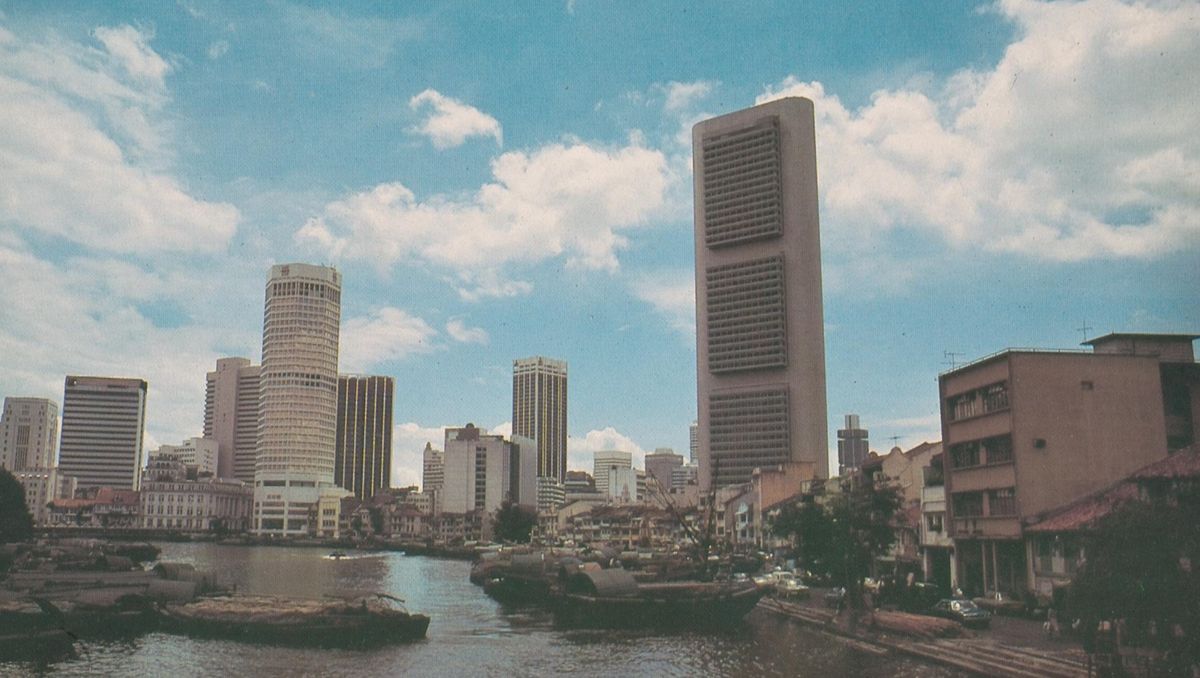
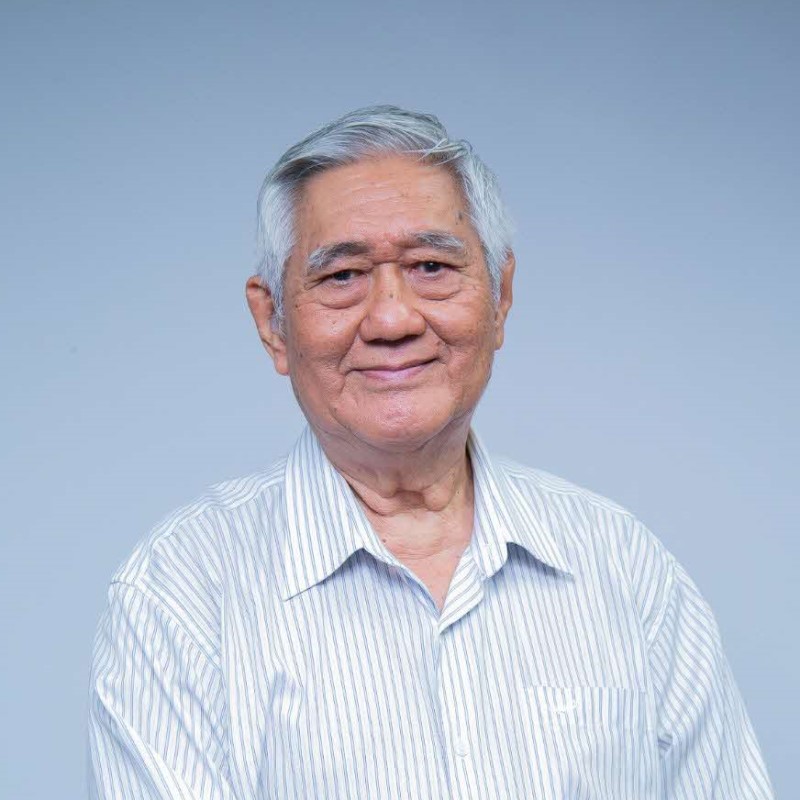
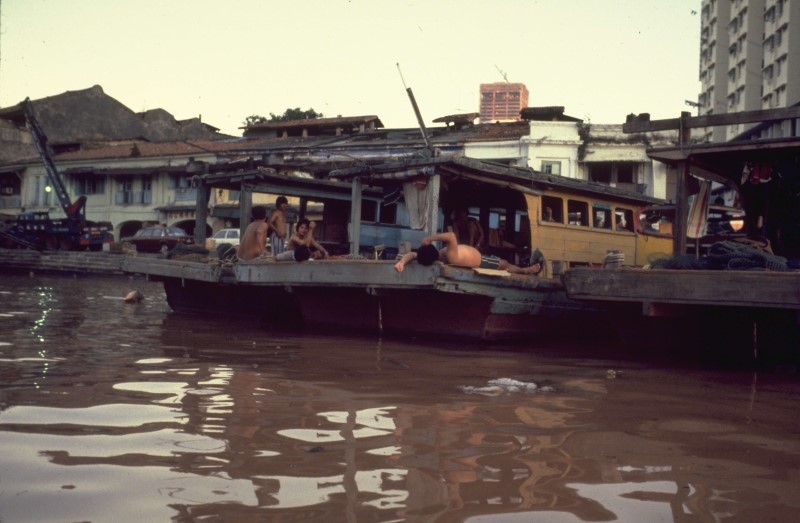
.ashx)
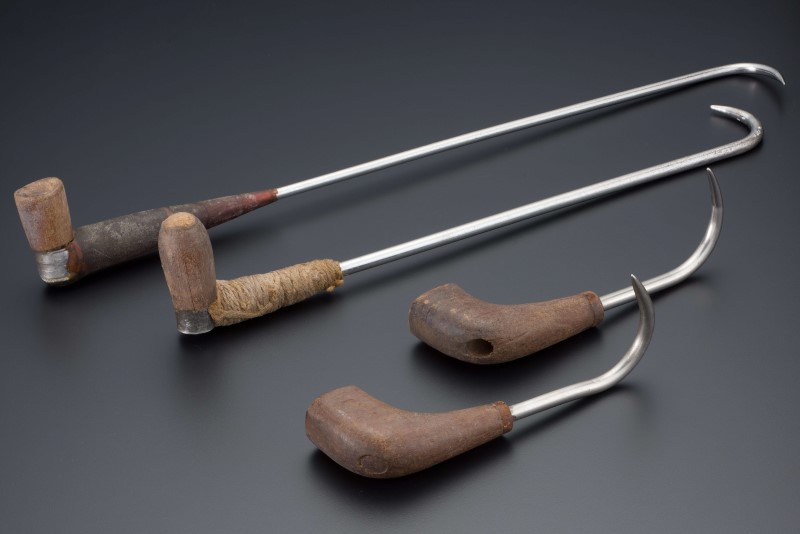
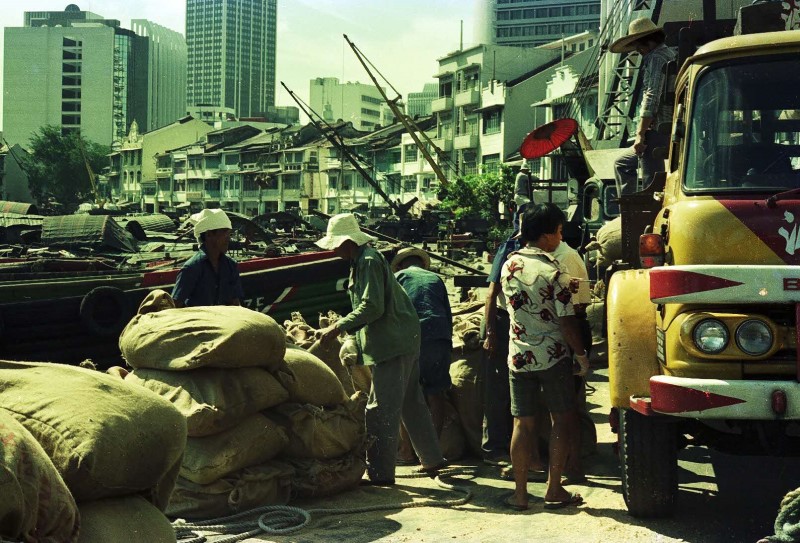
.ashx)
